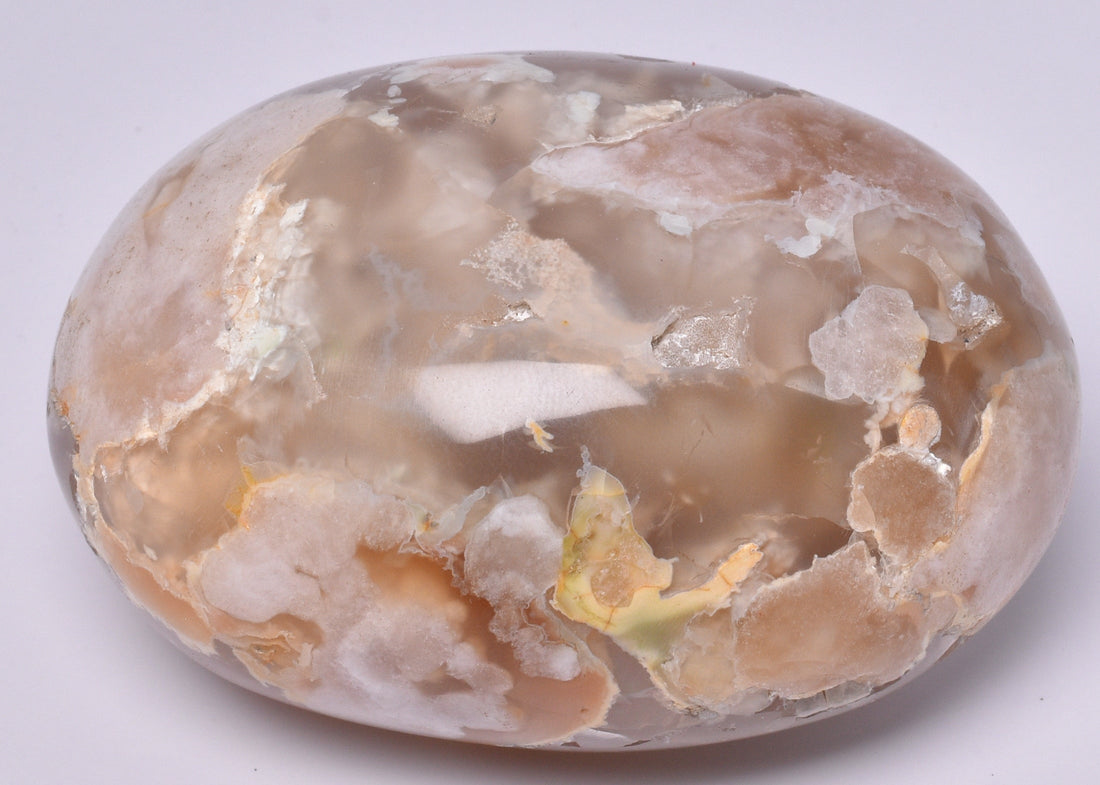
Flower Agate: Geological Formation, Mineralogy, and Applications
Share
Flower agate is a recently discovered and visually distinctive variety of agate, a microcrystalline form of quartz belonging to the chalcedony group. First identified in Madagascar in the late 2010s, flower agate has quickly gained attention among mineral collectors, lapidary artists, and geoscientists for its unique internal structures that resemble blooming floral patterns. These inclusions are not actual flowers, but rather plume-like formations of opaque chalcedony that appear embedded within a translucent matrix.
Geological Formation
Flower agate forms in volcanic environments, typically within vesicles or cavities of basaltic lava flows. These cavities are created by trapped gas bubbles during volcanic activity. Over time, silica-rich fluids percolate through the rock, depositing layers of chalcedony and other minerals. The floral-like inclusions are thought to result from variations in the rate of silica deposition and the presence of trace elements such as iron, manganese, and titanium, which influence colour and opacity.
The mineralisation process occurs over millions of years, aligning flower agate with the concept of Deep Time geology. The agate’s banding and inclusions reflect episodic changes in the geochemical environment, including temperature, pressure, and fluid composition.
Mineralogical Properties
-
Chemical composition: SiO₂ (Silicon dioxide)
-
Crystal system: Trigonal (cryptocrystalline quartz)
-
Hardness: 6.5–7 on the Mohs scale
-
Specific gravity: Approximately 2.60
-
Lustre: Waxy to vitreous
-
Transparency: Translucent to opaque
-
Fracture: Conchoidal
Flower agate typically exhibits soft pink to peach hues, often with white or cream-coloured inclusions. These colours are attributed to trace elements and the presence of microscopic mineral impurities. The stone’s durability and polishability make it ideal for lapidary work, including cabochons, carvings, and ornamental objects.
Petrographic Features
Under thin section analysis, flower agate reveals a fine-grained intergrowth of quartz fibres, with plume-like structures composed of more opaque chalcedony. These plumes often show concentric zoning and radial growth patterns, suggesting a dynamic crystallisation environment. The matrix may also contain microcrystalline quartz and occasional voids filled with secondary minerals.
Geographic Distribution
While Madagascar remains the primary source of high-quality flower agate, similar material has been reported in limited quantities from China, Brazil, and the United States. Madagascan specimens are particularly prized for their vivid colours and well-defined inclusions.
Applications and Cultural Significance
In addition to its geological interest, flower agate is widely used in jewellery and decorative arts. Its aesthetic appeal has led to its popularity in metaphysical circles, where it is often associated with growth, transformation, and emotional healing. While these claims are anecdotal, they contribute to the stone’s commercial value.
From a scientific standpoint, flower agate serves as a case study in silica mineralisation within volcanic systems. Its formation illustrates the interplay between fluid dynamics, trace element chemistry, and crystallisation kinetics.
References
-
Geology Science: Flower Agate – Properties, Formation, Uses, Locations
-
Rare Earth Gallery: Flower Agate – Stone Information, Healing Properties, Uses
-
Geology Page: Exploring the Beauty and Mystery of Flower Agate Mindat.org: Chalcedony Mineral Data